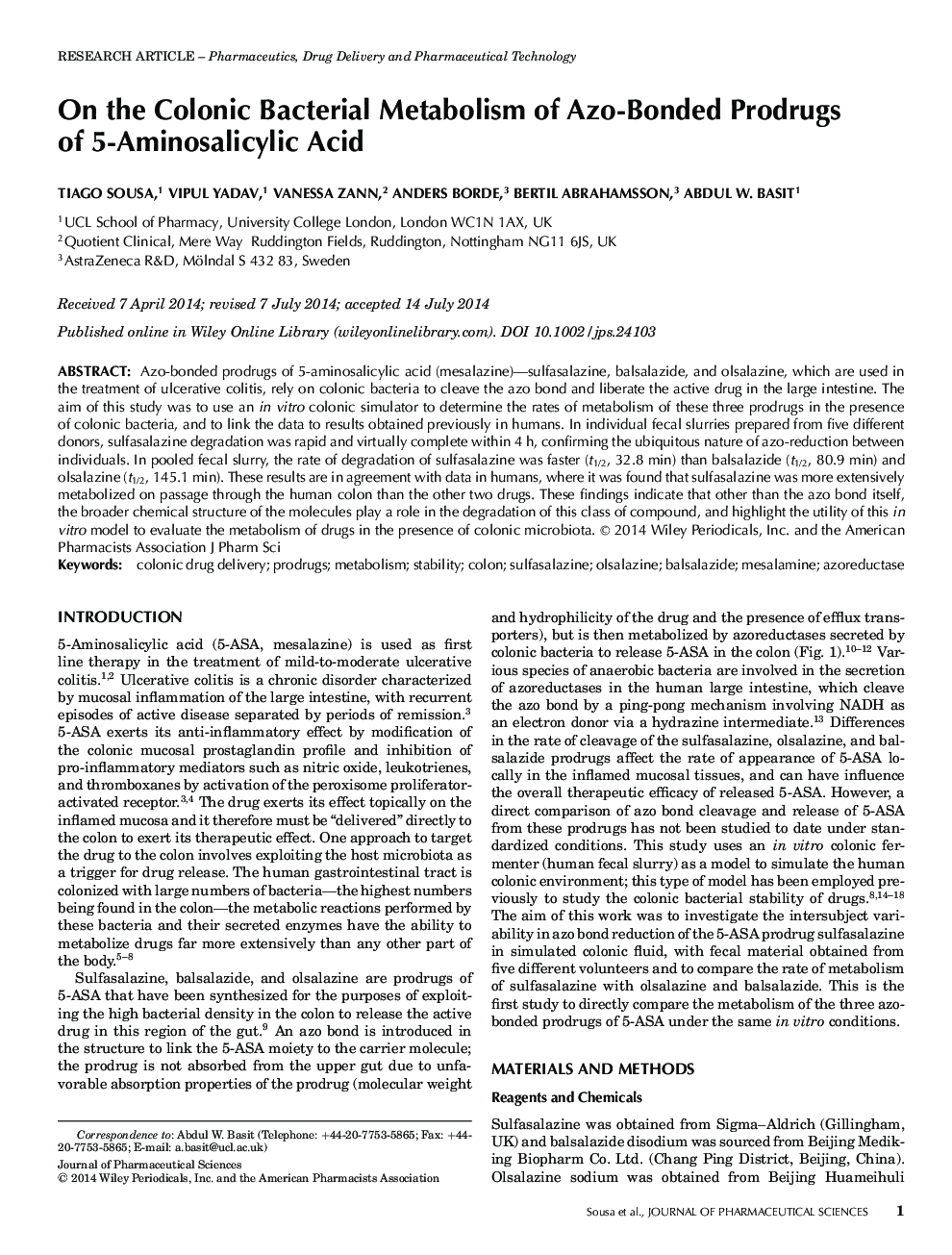| Article ID | Journal | Published Year | Pages | File Type |
|---|---|---|---|---|
| 2484668 | Journal of Pharmaceutical Sciences | 2014 | 5 Pages |
Abstract
Azo-bonded prodrugs of 5-aminosalicylic acid (mesalazine)-sulfasalazine, balsalazide, and olsalazine, which are used in the treatment of ulcerative colitis, rely on colonic bacteria to cleave the azo bond and liberate the active drug in the large intestine. The aim of this study was to use an in vitro colonic simulator to determine the rates of metabolism of these three prodrugs in the presence of colonic bacteria, and to link the data to results obtained previously in humans. In individual fecal slurries prepared from five different donors, sulfasalazine degradation was rapid and virtually complete within4Â h, confirming the ubiquitous nature of azo-reduction between individuals. In pooled fecal slurry, the rate of degradation of sulfasalazine was faster (t1/2, 32.8 min) than balsalazide (t1/2, 80.9 min) and olsalazine (t1/2, 145.1 min). These results are in agreement with data in humans, where it was found that sulfasalazine was more extensively metabolized on passage through the human colon than the other two drugs. These findings indicate that other than the azo bond itself, the broader chemical structure of the molecules play a role in the degradation of this class of compound, and highlight the utility of this in vitro model to evaluate the metabolism of drugs in the presence of colonic microbiota. © 2014 Wiley Periodicals, Inc. and the American Pharmacists Association J Pharm Sci 103:3171-3175, 2014
Keywords
Related Topics
Health Sciences
Pharmacology, Toxicology and Pharmaceutical Science
Drug Discovery
Authors
Tiago Sousa, Vipul Yadav, Vanessa Zann, Anders Borde, Bertil Abrahamsson, Abdul W. Basit,
